#nimona film
Explore tagged Tumblr posts
Text
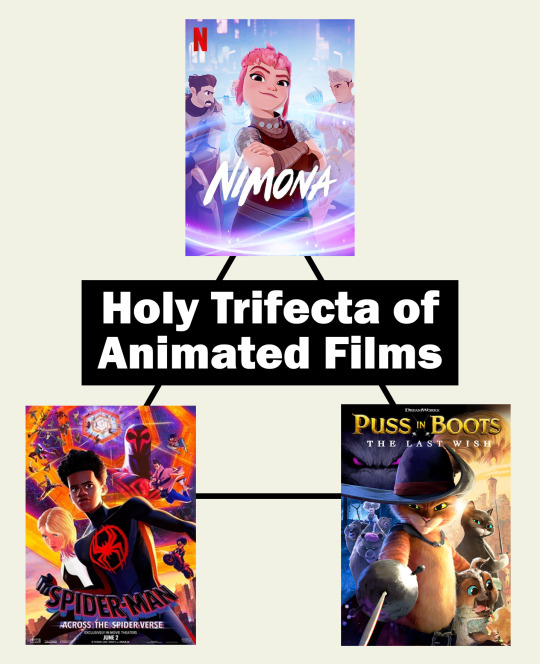
I can't keep being fundamentally changed as a person by animated movies, it's just not sustainable.
#animation#animated film#animated movies#across the spiderverse#across the spider-verse#spiderverse#puss in boots#puss in boots the last wish#puss in boots 2#nimona#nimona film#yes i'm posting this specifically because i just watched nimona and am feeling all kinds of things but really these are all PEAK TIER#the fact they have ALL been released within 7 months of each other...like...woah we are thriving right now#stylised animation with its own unique style reflecting the movie i love you forever kissing you on the mouth#films that make me ferally rip up any and all art blocks to shreds#and that's just the animation side of things#i won't get started on the plots. they also make me want to bounce off of walls#hugging all these close to my chest#as well as all the other great animated movies that exist because animation wins all catergories for me always#(let's not forget anime movies either; y'all are beautiful too! keeping 2d animation alive and i'm so here for it)
33K notes
·
View notes
Text

go watch Nimona. One of my fav movies now
#art#artwork#drawing#digital art#illustration#anime#nimona#ambrosius goldenloin#nimona 2023#nimona netflix#nimona film#nimona comic#ballister boldheart#ballister x ambrosius#ballister blackheart#ambrosius#boldheart#nimona ballister
26K notes
·
View notes
Text
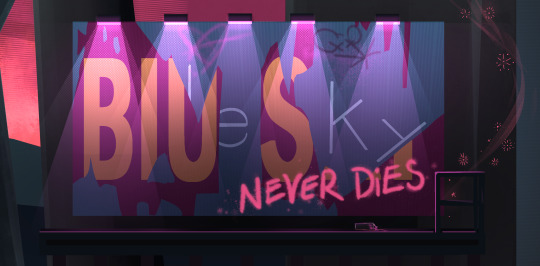
yeah.. im never going to stop thinking about this easter egg in Nimona
20K notes
·
View notes
Text
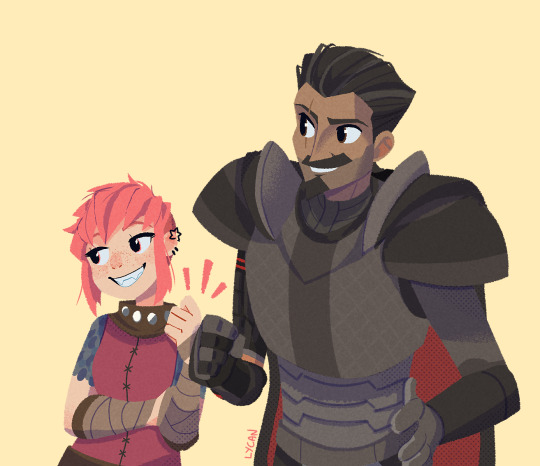
they're besties :D
#nimona#ballister boldheart#nimona fanart#nimona movie#nimona film#art#my art#bonus points for their father daughter vibes#some mistakes are there but i drew this for too long now lmao i want to finish it fast#and the canvas size is quite wacky hoo#anyway let them be chaotic and happy that's all i want
6K notes
·
View notes
Text
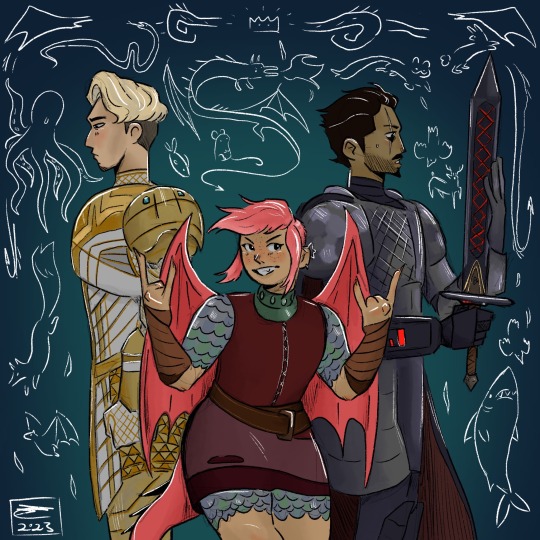
i have watched this film 3 times in the past 2 days. so good. one of the best animated films i think i’ve ever seen.
#nimona#fanart#sofia ciccotto art#skippys here art#nimona fanart#nimona film#nd stevenson#illustration#i cried so much#ballister boldheart#ambrosius goldenloin
11K notes
·
View notes
Text
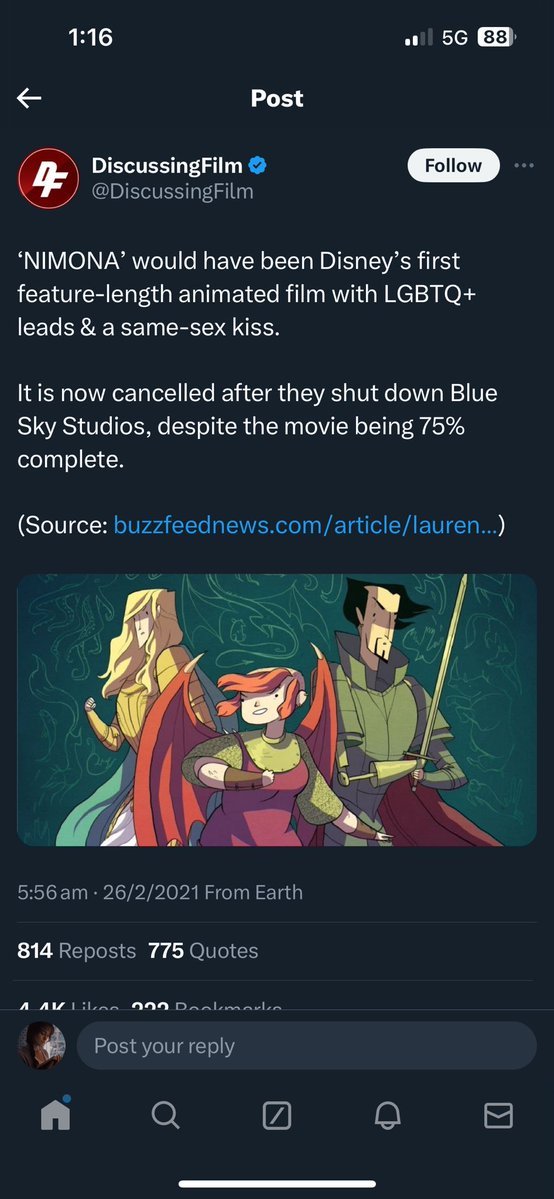
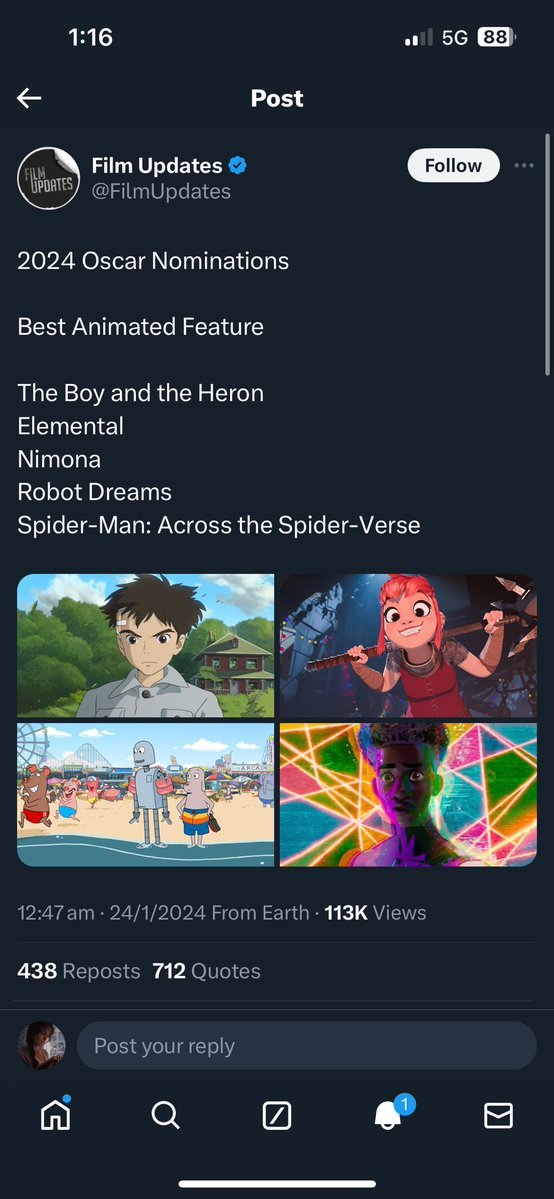
how it started vs how it's going
#im so happy like wtf#nimona#nd stevenson#goldernheart#ballister boldheart#ambrosius goldenloin#nimona 2023#nimona netflix#nimona film
4K notes
·
View notes
Text
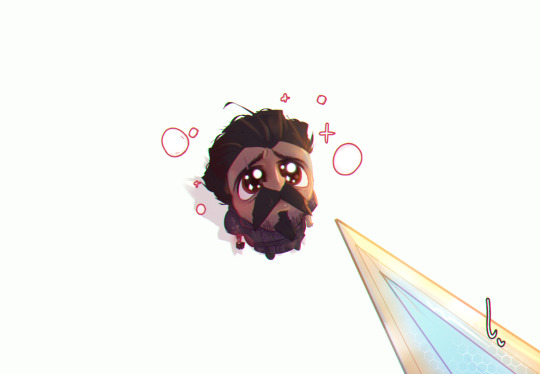
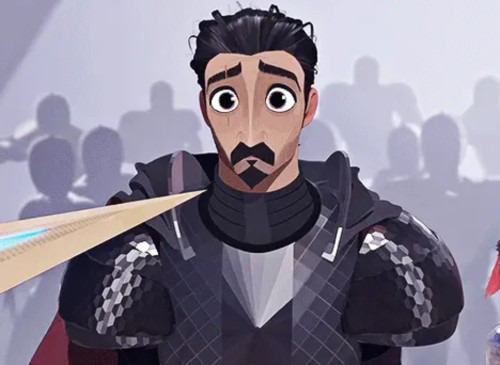
screenshot redraw
ko-fi
#nimona#ballister#fan art#illustration#nimona film#nimona netflix#ballister boldheart#sopping wet cat#doodle#syalanko#pourwatter#1k#2k#5k#10k#koko2unite#koko2unite draws
12K notes
·
View notes
Text
Ballister is everything I want in a canonically gay character. Pathetic. Silly. Accidental adoptive father. Traumatized. Has a boyfriend who chopped his arm off. Wet cat energy. He’s got it all.
#I love him if you couldn’t tell#nimona#nimona movie#netflix#nd stevenson#animation#ballister blackheart#ballister boldheart#nimona film
10K notes
·
View notes
Text
Nimona: a Story of Trans Rights, Queer Solidarity, and the Battle Against Censorship
by Ren Basel renbasel.com
The 2023 film Nimona, released on Netflix after a tumultuous development, is a triumph of queer art. While the basic plot follows a mischievous shapeshifter befriending a knight framed for murder, at its heart Nimona is a tale of queer survival in the face of bigotry and censorship. Though the word “transgender” is never spoken, the film is a deeply political narrative of trans empowerment.
The film is based on a comic of the same name, created by Eisner-winning artist N.D. Stevenson. (1) Originally a webcomic, Nimona stars the disgraced ex-knight Ballister Blackheart and his titular sidekick, teaming up to topple an oppressive regime known as the Institution. The webcomic was compiled into a graphic novel published by Harper Collins on May 12, 2015. (2)
On June 11, 2015, the Hollywood Reporter broke the news Fox Animation had acquired rights to the story. (3) A film adaptation would be directed by Patrick Osborne, written by Marc Haimes, and produced by Adam Stone. Two years later, on February 9, 2017, Osborne confirmed the film was being produced with the Fox-owned studio Blue Sky Animation, and on June 30 of that same year, he claimed the film would be released Valentine’s Day 2020. (4)
Then the Walt Disney Company made a huge mess.
On December 14, 2017, Disney announced the acquisition of Twenty-First Century Fox, Inc. (5) Industry publications began speculating the same day about Blue Sky’s fate, though nothing would be confirmed until after the deal’s completion on March 19, 2019. (6) At first it seemed the studio would continue producing films under Disney’s governance, similar to Disney-owned Pixar Animation. (7)
The fate of the studio—and Nimona’s film adaptation—remained in purgatory for two years. During that time, Patrick Osborne left over reported creative differences, and directorial duties were taken over by Nick Bruno and Troy Quane. (8) Bruno and Quane continued production on the film despite Blue Sky’s uncertain future.
The killing blow came on February 9, 2021. Disney shut down Blue Sky and canceled Nimona, the result of economic hardship caused by COVID-19. (9) Nimona was seventy-five percent completed at the time, set to star Chloë Grace Moretz and Riz Ahmed. (10)
While COVID-19 caused undeniable financial upheaval for the working class, wealthy Americans fared better. (11) Disney itself scraped together enough to pay CEO Bob Iger twenty-one million dollars in 2020 alone. (12) Additionally, demand for animation spiked during the pandemic’s early waves, and Nimona could have been the perfect solution to the studio’s supposed financial woes. (13) Why waste the opportunity to profit from Blue Sky’s hard work?
It didn’t take long for the answer to surface. Speaking anonymously to the press, Blue Sky workers revealed the awful truth: Disney may have killed Nimona for being too queer. The titular character was gender-nonconforming, the leading men were supposed to kiss, and Disney didn’t like it. (14) While Disney may claim COVID-19 as the cause, it is noteworthy that Disney representatives saw footage of two men declaring their love, and not long after, the studio responsible was dead. (15) Further damning evidence came in February of 2024, when the Hollywood Reporter published an article quoting co-director Nick Bruno, who named names: Disney’s chief creative officer at the time, Alan Horn, was adamantly opposed to the film’s “gay stuff.” (16)
Disney didn’t think queer art was worthy of their brand, and it isn’t the first time. “Not fitting the Disney brand” was the justification for canceling Dana Terrace’s 2020 animated series The Owl House, which featured multiple queer characters. (17) Though Terrace was reluctant to assume queerphobia caused the cancellation, Disney’s anti-queer bias has been cited as a hurdle by multiple showrunners, including Terrace herself. (18) The company’s resistance to queer art is a documented phenomenon.
While Nimona’s film cancellation could never take N.D. Stevenson’s comic from the world, it was a sting to lose such a powerful queer narrative on the silver screen. American film has a long history of censoring queerness. The Motion Picture Production Code (commonly called the Hays Code) censored queer stories for decades, including them under the umbrella of “sex perversion.” (19) Though the Code was eventually repealed, systemic bigotry turns even modern queer representation milestones into battles. In 2018, when Rebecca Sugar, creator of the Cartoon Network series Steven Universe, succeeded in portraying the first-ever same-sex marriage proposal in American children’s animation, the network canceled the show in retaliation. (20)
When queer art has to fight so hard just to exist, each loss is a bitter heartbreak. N.D. Stevenson himself expressed sorrow that the world would never see what Nimona’s crew worked so hard to achieve. (21)
Nimona, however, is hard to kill.
While fans mourned, progress continued behind the scenes. Instead of disappearing into the void as a tax write-off, the film was quietly scooped up by Megan Ellison of Annapurna Pictures. (22) Ellison received a call days before Disney’s death blow to Blue Sky, and after looking over storyboard reels, she decided to champion the film. With Ellison’s support, former Blue Sky heads Robert Baird and Andrew Millstein did their damnedest to find Nimona a home. (23)
Good news arrived on April 11, 2022, when N.D. Stevenson made a formal announcement on Twitter (now X): Nimona was gloriously alive, and would release on Netflix in 2023. (24) Netflix confirmed the news in its own press release, where it also provided details about the film’s updated cast and crew, including Eugene Lee Yang as Ambrosius Goldenloin alongside Riz Ahmed’s Ballister Boldheart (changed from the name Blackheart in the comic) and Chloë Grace Moretz as Nimona. (25) The film was no longer in purgatory, and grief over its death became anticipation for its release.
Nimona made her film debut in France, premiering at the Annecy International Animation Film Festival on June 14, 2023 to positive reviews. (26) Netflix released the film to streaming on June 30, finally completing the story’s arduous journey from page to screen. (27)
When the film begins, the audience is introduced to the world through a series of illustrated scrolls, evoking the storybook intros of Disney princess films such as 1959’s Sleeping Beauty. The storybook framing device has been used to parody Disney in the past, perhaps most famously in the 2001 Dreamworks film Shrek. Just as Shrek contains parodies of the Disney brand created by a Disney alumnus, so, too, does Nimona riff on the studio that snubbed it. (28)
Nimona’s storybook intro tells the story of Gloreth, a noble warrior woman clad in gold and white, who defended her people from a terrible monster. After slaying the beast, Gloreth established an order of knights called the Institute (changed from the Institution in the comic) to wall off the city and protect her people.
Right away, the film introduces a Christian dichotomy of good versus evil. Gloreth is presented as a Christlike figure, with the Institute’s knights standing in as her saints. (29) Her name is invoked like the Christian god, with characters uttering phrases such as “oh my Gloreth” and “Gloreth guide you.” The film’s design borrows heavily from Medieval Christian art and architecture, bolstering the metaphor.
Nimona takes place a thousand years after Gloreth’s victory. Following the opening narration, the audience is dropped into a setting combining Medieval aesthetics with futuristic science fiction, creating a sensory delight of neon splashed across knights in shining armor. It’s in this swords-and-cyborgs city that a new knight is set to join the illustrious ranks of Gloreth’s Institute, now under the control of a woman known only as the Director (voiced by Frances Conroy). That new knight is our protagonist, Ballister Boldheart.
The film changes several things from the original. The comic stars Lord Ballister Blackheart, notorious former knight, long after his fall from grace. He has battled the Institution for years, making a name for himself as a supervillain. The film introduces a younger Ballister Boldheart who is still loyal to the Institute, who believes in his dream of becoming a knight and overcomes great odds to prove himself worthy. In the comic, Blackheart’s greatest rival is Sir Ambrosius Goldenloin, with whom he has a messy past. The film shows more of that past, when Goldenloin and Boldheart were young lovers eager to become knights by each other’s side.
There is another notable change: in the comic, Goldenloin is white, and Blackheart is light-skinned. In the film, both characters are men of color—specifically, Boldheart is of Pakistani descent, and Goldenloin is of Korean descent, matching the ethnicity of their respective voice actors. This change adds new themes of institutional racism, colorism, and the “model minority” stereotype. (30)
The lighter-skinned Goldenloin is, as his name suggests, the Institute’s golden boy. He descends from the noble lineage of Gloreth herself, and his face is emblazoned on posters and news screens across the city. He is referred to as “the most anticipated knight of a generation.” In contrast, the darker-skinned Boldheart experiences prejudice and hazing due to his lower-class background. His social status is openly discussed in the news. He is called a “street kid” and “controversial,” despite being the top student in his class. The newscasters make sure everyone knows he was only given the chance to prove himself in the Institute because the queen, a Black woman with established social influence, gave him her personal patronage. Despite this patronage, when the news interviews citizens on the street, public opinion is firmly against Boldheart.
To preserve the comic’s commentary on white privilege, some of Goldenloin’s traits were written into a new, white character created for the film, Sir Thoddeus Sureblade (voiced by Beck Bennett). Sureblade’s vitriol against both Boldheart and Goldenloin allowed Goldenloin to become a more sympathetic character, trapped in the system just as much as Boldheart. (31) This is emphasized at other points in the film when the audience sees Sureblade interact with Goldenloin without Boldheart present, berating the only person of color left in the absence of the darker-skinned man.
The day Boldheart is to be knighted, everything goes wrong. As Queen Valerin (voiced by Lorraine Toussaint) performs the much-anticipated knighting ceremony, a device embedded in Boldheart’s sword explodes, killing her instantly. Though Boldheart is not to blame, he is dubbed an assassin instead of a knight. In an instant, he becomes the most wanted man in the kingdom, and Queen Valerin’s hopes for progress and social equality seem dead with her. Boldheart is gravely injured in the explosion and forced to flee, unable to clear his name.
Enter Nimona.
The audience meets the titular character in the act of vandalizing a poster of Gloreth, only to get distracted by an urgent broadcast on a nearby screen. As she approaches, a bystander yells that she’s a “freak,” in a manner reminiscent of slurs screamed by passing bigots. Nimona has no time for bigots, spraying this one in the face with paint before tuning in to the news.
“Everyone is scared,” declare the newscasters, because queen-killer Ballister Boldheart is on the run. The media paints him as a monster, a filthy commoner who never deserved the chances he was given, and announce that, “never since Gloreth’s monster has anything been so hated.” This characterization pleases Nimona, and she declares him “perfect” before scampering off to find his hiding place.
It takes the span of a title screen for her to track him down, sequestered in a makeshift junkyard shelter. Just before Nimona bursts into the lair, the audience sees Boldheart’s injuries have resulted in the amputation of his arm, and he is building a homemade prosthetic. This is another way he’s been othered from his peers in an instant, forced to adapt to life-changing circumstances with no support. Where he was so recently an aspiring knight with a partner and a dream, he is now homeless, disabled, and isolated.
A wall in the hideout shows a collection of news clippings, suspects, and sticky notes where Boldheart is trying to solve the murder and clear his name. His own photo looks down from the wall, captioned with a damning headline: “He was never one of us—knights reveal shocking details of killer’s past.” It evokes real-world racial bias in crime reporting, where suspects of color are treated as more violent, unstable, and prone to crime than white suspects. A 2021 report by the Equal Justice Initiative and the Global Strategy Group compiled data on this phenomenon, focusing on the stark disparity between coverage of white and Black suspects. (32)
Nimona is not put off by Boldheart’s sinister media reputation. It’s why she tracked him down in the first place. She’s arrived to present her official application as Boldheart’s villain sidekick and help him take down the Institute. Boldheart brushes her off, insisting he isn’t a villain. He has faith in his innocence and in the system, and leaves Nimona behind to clear his name.
When he is immediately arrested, stripped of his prosthetic, and jailed, Nimona doesn’t abandon him. She springs a prison break, and conveys a piece of bitter wisdom to the fallen knight: “[O]nce everyone sees you as a villain, that’s what you are. They only see you one way, no matter how hard you try.”
Nimona and Boldheart are both outcasts, but they are at different stages of processing the pain. Boldheart is deep in the grief of someone who tried to adhere to the demands of a biased system but finally failed. He is the newly cast-out, who gave his entire life to the system but still couldn’t escape dehumanization. His pain is a fresh, raw wound, where Nimona has old scars. She embodies the deep anger of those who have existed on the margins for years. Where Boldheart wants to prove his innocence so he can be re-accepted into the fold, Nimona’s goal is to tear the entire system apart. She finds instant solidarity with Boldheart based solely on their mutual status as outsiders, but Boldheart resists that solidarity because he still craves the system’s familiar structure.
In the comic, Blackheart’s stance is not one of fresh grief, since, just like Nimona, he has been an outsider for some time. Instead, Blackheart’s position is one of slow reform. He believes the system can be changed and improved, while Nimona urges him to demolish it entirely. In both versions, Ballister thinks the system can be fixed by removing specific corrupt influences, where Nimona believes the government is rotten to its foundations and should be dismantled. Despite their ideological differences, Nimona and Ballister ally to survive the Institute’s hostility.
The allyship is an uneasy truce. During the prison break, Nimona reveals that she’s a shapeshifter, able to change into whatever form she pleases. Boldheart reflexively reaches for his sword, horrified that she isn’t human. She is the exact sort of monster he has been taught to fear by the Institute, and it’s only because he needs her help that he overcomes his reflex and sticks with her.
Nimona’s shapeshifting functions as a transgender allegory. The comic’s author, N.D. Stevenson, is transgender, and Nimona’s story developed alongside his own queer journey. (33) The trans themes from the comic are emphasized in the film, with various pride flags included in backgrounds and showcased in the art book. (34) Directors Bruno and Quane described the film as “a story about acceptance. A movie about being seen for who you truly are and a love letter to all those who’ve ever shared that universal feeling of being misunderstood or like an outsider trying to fit in.” (35)
When Boldheart asks Nimona what she is, she responds with only “Nimona.” When he calls her a girl, she retorts that she’s “a lot of things.” When she transforms into another species, she specifies in that moment that she’s “not a girl, I’m a shark.” Later, when she takes the form of a young boy and Boldheart comments on it, saying “now you’re a boy,” her response is, “I am today.” She defies easy categorization, and she likes it that way.
About her shapeshifting, Nimona says “it feels worse if I don’t do it” and “I shapeshift, then I’m free.” When asked what happens if she doesn’t shapeshift, she responds, “I wouldn’t die-die, I just sure wouldn’t be living.” Every time she discusses her transformations, it carries echoes of transgender experience—and, as it happens, Nimona is not N.D. Stevenson’s only shapeshifting transgender character. During his tenure as showrunner for She-Ra and the Princesses of Power (Netflix/Dreamworks, 2018-2020), Stevenson introduced the character Double Trouble. Double Trouble previously existed at the margins of She-Ra lore, but Stevenson’s version was a nonbinary shapeshifter using they/them pronouns. (36) While Nimona uses she/her pronouns throughout both comic and film, just like Double Trouble her gender presentation is as fluid as her physical form.
Boldheart, like many cisgender people reacting to transgender people, is uncomfortable with Nimona. He declares her way of doing things “too much,” and insists they try to be “inconspicuous” and “discreet.” He worries whether others saw her, and, when she is casually in a nonhuman form, he asks if she can “be normal for a second.” He claims to support her, but says it would be “easier if she was a girl” because “other people aren’t as accepting.” His discomfort evokes fumbled allyship by cisgender people, and Nimona emphasizes the allegory by calling Boldheart out for his “small-minded questions.” While the alliance is uneasy, Boldheart continues working with Nimona to clear his name. They are the only allies each other has, and their individual survival is dependent on them working together.
When the duo gain video proof of Boldheart’s innocence, they learn the bomb that killed Queen Valerin was planted by the Director. Threatened by a Black woman using her influence to elevate a poor, queer man of color, the white Director chose to preserve the status quo through violence.
Nimona is eager to get the video on every screen in the city, but Boldheart wants to deal with the issue internally, out of the public eye. He insists “the Institute isn’t the problem, the Director is.” This belief is what also leads the comic’s Blackheart to reject Nimona’s idea that he should crown himself king. He is focused on reforming the existing power structure, neither removing it entirely nor taking it over himself.
Inside the Institute, the Director has been doing her best to set Goldenloin against his former partner. Despite his internal misgivings and fear of betraying someone he loves, Goldenloin does his best to adhere to his prescribed role. As the Director reminds the knights, they are literally born to defend the kingdom, and it’s their sacred duty to do so—especially Goldenloin, who carries Gloreth’s holy blood. This blood connection is repeated throughout the film, and used by the Director to exploit Goldenloin. He’s the Institute’s token minority, put on a gilded pedestal and treated as a symbol instead of a human being.
Goldenloin is a pretty face for propaganda posters, and those posters can be seen throughout the film. They proclaim Gloreth’s majesty, the power of the knights, and remind civilians that the Institute is necessary to “protect our way of life.” A subway PSA urges citizens, “if you see something, slay something,” in a direct parody of the real-world “if you see something, say something” campaign by the United States Department of Homeland Security. (37)
The film is not subtle in its political messaging. When Boldheart attempts to prove his innocence to Goldenloin and the assembled knights, he reaches towards his pocket for a phone. The Director cries that Boldheart has a weapon, and Sureblade opens fire. Though the shot hits the phone and not Boldheart, it carries echoes of real-world police brutality against people of color. Specifically, the use of a phone evokes cases such as the 2018 murder of Stephon Clark, a young Black man who was shot and killed by California police claiming Clark’s cell phone was a firearm. (38) The film does not toy with vague, depoliticized themes of coexistence and tolerance; it is a direct and pointed allegory for contemporary oppression in the United States of America.
Forced to choose between love for Boldheart and loyalty to the Institute, Goldenloin chooses the Institute. He calls for Boldheart’s arrest, and this is the moment Boldheart finally agrees to fight back and raise hell alongside Nimona. When Goldenloin calls Nimona a monster during the ensuing battle, Boldheart doesn’t hesitate to refute it. He expresses his trust in her, and it’s clear he means it. He’s been betrayed by someone he cared about and thought he could depend on, and this puts him in true solidarity with Nimona for the first time.
During the fight, Nimona stops a car from crashing into a small child. She shapeshifts into a young girl to appear less threatening, but it doesn’t work. The child picks up a sword, pointing it at Nimona until an adult pulls them away to hide. When Nimona sees this hatred imprinted in the heart of a child, it horrifies her.
After fleeing to their hideout, Nimona makes a confession to Boldheart: she has suicidal ideations. So many people have directed so much hatred toward her that sometimes she wants to give in and let them kill her. In the real world, a month after the film’s release, a study from the Williams Institute at the UCLA School of Law compiled data about suicidality in American transgender adults. (39) Researchers found that eighty-one percent have thought about suicide, compared to just thirty-five percent of cisgender adults. Forty-two percent have attempted suicide, compared to eleven percent of cisgender adults. Fifty-six percent have engaged in self-harm, compared to twelve percent of cisgender adults.
When Boldheart offers to flee with her and find somewhere safe together, Nimona declares they shouldn’t have to run. She makes the decision every trans person living in a hostile place must make: do I leave and save myself, or do I stay to fight for my community? The year the film was released, the Trans Legislation Tracker reported a record-breaking amount of anti-trans legislation in the United States, with six hundred and two bills introduced throughout twenty-four states. (40) In February 2024, the National Center for Transgender Equality published data on their 2022 U.S. Transgender Survey, revealing that forty-seven percent of respondents thought about moving to another area due to discrimination, with ten percent actually doing so. (41)
Despite the danger, Nimona and Boldheart work diligently against the Institute. When they gain fresh footage proving the Director’s guilt, they don’t hesitate to upload it online, where it garners rapid attention across social and news media. Newscasters begin asking who the real villain is, anti-Institute sentiment builds, and citizens protest in the streets, demanding answers. The power that social media adds to social justice activism is true in the real world as it is in the film, seen in campaigns such as the viral #MeToo hashtag and the Black Lives Matter movement. (42) In 2020, polls conducted by the Pew Research Center showed eight in ten Americans viewed social media platforms as either very or somewhat effective in raising awareness about political and social topics. In the same survey, seventy-seven percent of respondents believed social media is at least somewhat effective in organizing social movements. (43)
In reaction to the media firestorm, the Director issues a statement. She outs Nimona as a shapeshifter, and claims the evidence against the Institute is a hoax. Believing the Director, Goldenloin contacts Boldheart for a rendezvous, sans Nimona. From Goldenloin’s perspective, Boldheart is a good man who has been deceived by the real villain, Nimona. He tells Boldheart about a scroll the Director found, with evidence that Nimona is Gloreth’s original monster, still alive and terrorizing the city. Goldenloin wants to bring Boldheart back into the knighthood and resume their relationship, and though that’s what Boldheart wanted before, his solidarity with Nimona causes him to reject the offer.
Though he leaves Goldenloin behind, Boldheart’s suspicion of Nimona returns. Despite their solidarity, he doesn’t really know her, so he returns home to interrogate her. In the ensuing argument, he reverts to calling her a monster, but only through implication—he won’t say the word. Like a slur, he knows he shouldn’t say it anymore, but that doesn’t keep him from believing it.
Boldheart’s actions prove to Nimona that nowhere is safe. There is no haven. Her community will always turn on her. She flees, and in her ensuing breakdown, the audience learns her backstory. She was alone for an unspecified length of time, never able to fit in until meeting Gloreth as a little girl. Nimona presents herself to Gloreth as another little girl, and Gloreth becomes Nimona’s very first friend. Even when Nimona shapeshifts, Gloreth treats her with kindness and love.
Then the adults of Gloreth’s village see Nimona shapeshift, and the word “monster” is hurled. Torches and pitchforks come out. At the adults’ panic, Gloreth takes up a sword against Nimona, and the cycle of bigotry is transferred to the next generation. The friendship shatters, and Nimona must flee before she can be killed.
After losing Boldheart, seemingly Nimona’s only ally since Gloreth’s betrayal, Nimona’s grief becomes insurmountable. She knows in her heart that nothing will ever change. She’s been hurt too much, by too many, cutting too deeply. To Nimona, the world will only ever bring her pain, so she gives in. She transforms into the giant, ferocious monster everyone has always told her she is, and she begins moving through the city as the Institute opens fire.
When Ballister sees Nimona’s giant, shadowy form, he realizes the horrific pain he caused her. He intuits that Nimona isn’t causing destruction for fun, she’s on a suicide march. She’s given up, and her decision is the result of endless, systemic bigotry and betrayal of trust. Her rampage wouldn’t be happening if she’d been treated with love, support, and care.
Nimona’s previous admission of suicidal ideation repeats in voiceover as she prepares to impale herself on a sword pointed by a massive statue of Gloreth. Her suicide is only prevented because Ballister steps in, calling to her, apologizing, saying he sees her and she isn’t alone. She collapses into his arms, once again in human form, sobbing. Boldheart has finally accepted her truth, and she is safe with him.
But she isn’t safe from the Director.
In a genocidal bid she knows will take out countless civilian lives, the Director orders canons fired on Nimona. Goldenloin tries to stop her, finally standing up against the system, but it’s too late. The Director fires the canons, Nimona throws herself at the blast to protect the civilians, and Nimona falls.
When the dust settles, the Director is deposed and the city rebuilds. Boldheart and Goldenloin reconnect and resume their relationship. The walls around the city come down, reforms take hold in the Institute, and a memorial goes up to honor Nimona, the hero who sacrificed her life to reveal the Director’s corruption.
Nimona, however, is hard to kill.
Nimona originally had a tragic ending, born of N.D. Stevenson’s own depression, but that hopelessness didn’t last forever. (44) Though Nimona is defeated, she doesn’t stay dead. Through the outpouring of love and support N.D. Stevenson received while creating the original webcomic, he gained the community and support he needed to create a more hopeful ending for Nimona’s story—and himself.
The comic’s ending is bittersweet. Nimona can’t truly die, and eventually restores herself. She allows Blackheart to glimpse her, so he knows she survived, but she doesn’t stay. She still doesn’t feel safe, and is assumed to move on somewhere new. Blackheart never sees Nimona again.
The film’s ending is more hopeful. There is a shimmer of pink magic as Nimona announces her survival, and the film ends with Boldheart’s elated exclamation. Even death couldn’t keep her down. She survived Gloreth, and she survived the Director. Though this chapter of the story is over, there is hope on the horizon, and she has allies on her side.
In both incarnations, Nimona is a story of queer survival in a cruel world. The original ending was one of despair, that said there was little hope of true solidarity and allyship. The revised ending said there was hope, but still so far to go. The film’s ending says there is hope, there is solidarity, and there are people who will stand with transgender people until the bitter end—but, more importantly, there are people in the world who want trans people to live, to thrive, and to find joy.
In a world that’s so hostile to transgender people, it’s no wonder a radically trans-positive film had to fight so hard to exist. Unfortunately, the battle must continue. As of June 2024, Netflix hasn’t announced any intent to produce physical copies of the film, meaning it exists solely on streaming and is only accessible via a monthly paid subscription. Should Netflix ever take down its original animation, as HBO Max did in 2022 despite massive backlash, the film could easily become lost media. (45) Though it saved Nimona from Disney, Netflix has its own nasty history of under-marketing and canceling queer programs. (46)
The film’s art book is already gone. The multimedia tome was posted online on October 12, 2023, hosted at ArtofNimona.com. (47) Per the Internet Archive’s Wayback Machine, the site became a Netflix redirect at some point between 10:26 PM on March 9, 2024 and 9:35 PM on March 20, 2024. (48) On the archived site, some multimedia elements are non-functional, potentially making them lost media. The art book is not available through any legal source, and though production designer Aidan Sugano desperately wants a physical copy made, there seem to be no such plans. (49)
Perhaps Netflix will eventually release physical copies of both film and art book. Perhaps not. Time will tell. In the meantime, Nimona stands as a triumph of queer media in a queerphobic world. That it exists at all is a miracle, and that its accessibility is so precarious a year after release is a travesty. Contemporary political commentary is woven into every aspect of the film, and it exists thanks to the passion, talent, and bravery of an incredible crew who endured despite blatant corporate queerphobia.
Long live Nimona, and long live the transgender community she represents.
_ This piece was commissioned using the prompt "the Nimona movie."
Updated 6/16/24 to revise an inaccurate statement regarding the original comic.
Like this essay? Tip me on Ko-Fi, pledge to my Patreon, or commission an essay on the topic of your choice!
_
Notes:
1. “Past Recipients 2010s.” n.d. Comic-Con International. Accessed June 10, 2024. https://www.comic-con.org/awards/eisner-awards/past-recipients/past-recipenties-2010s/.
2. Stevenson, ND. 2015. Nimona. New York, NY: Harperteen.
3. Kit, Borys. 2015. “Fox Animation Nabs ‘Nimona’ Adaptation with ‘Feast’ Director (Exclusive).” The Hollywood Reporter. June 11, 2015. https://www.hollywoodreporter.com/movies/movie-news/fox-animation-nabs-nimona-adaptation-801920/.
4. Riley, Jenelle. 2017. “Oscar Winner Patrick Osborne Returns with First-Ever vr Nominee ‘Pearl.’” Variety. February 9, 2017. https://variety.com/2017/film/in-contention/patrick-osborne-returns-to-race-with-first-vr-nominee-pearl-1201983466/; Osborne, Patrick (@PatrickTOsborne). 2017. "Hey world, the NIMONA feature film has a release date! @Gingerhazing February 14th 2020 !!" Twitter/X, June 30, 2017, 3:16 PM. https://x.com/PatrickTOsborne/status/880867591094272000.
5. “The Walt Disney Company to Acquire Twenty-First Century Fox, Inc., after Spinoff of Certain Businesses, for $52.4 Billion in Stock.” 2017. The Walt Disney Company. December 14, 2017. https://thewaltdisneycompany.com/walt-disney-company-acquire-twenty-first-century-fox-inc-spinoff-certain-businesses-52-4-billion-stock-2/.
6. Amidi, Amid. 2017. “Disney Buys Fox for $52.4 Billion: Here Are the Key Points of the Deal.” Cartoon Brew. December 14, 2017. https://www.cartoonbrew.com/business/disney-buys-fox-key-points-deal-155390.html; Giardina, Carolyn. 2017. “Disney Deal Could Redraw Fox’s Animation Business.” The Hollywood Reporter. December 14, 2017. https://www.hollywoodreporter.com/news/general-news/disney-deal-could-redraw-foxs-animation-business-1068040/; Szalai, Georg, and Paul Bond. 2019. “Disney Closes $71.3 Billion Fox Deal, Creating Global Content Powerhouse.” The Hollywood Reporter. March 19, 2019. https://www.hollywoodreporter.com/news/general-news/disney-closes-fox-deal-creating-global-content-powerhouse-1174498/.
7. Hipes, Patrick. 2019. “After Trying Day, Disney Sets Film Leadership Lineup.” Deadline. March 22, 2019. https://deadline.com/2019/03/disney-film-executives-post-merger-team-set-1202580586/.
8. Jones, Rendy. 2023. “‘Nimona’: Netflix’s Remarkable Trans-Rights Animated Movie Is Here.” Rolling Stone. July 3, 2023. https://www.rollingstone.com/tv-movies/tv-movie-features/nimona-netflix-trans-rights-animated-movie-lgbtq-riz-ahmed-chloe-grace-moretz-1234782583/.
9. D’Alessandro, Anthony. 2021. “Disney Closing Blue Sky Studios, Fox’s Once-Dominant Animation House behind ‘Ice Age’ Franchise.” Deadline. February 9, 2021. https://deadline.com/2021/02/blue-sky-studios-closing-disney-ice-age-franchise-animation-1234690310/.
10. “Disney’s Blue Sky Shut down Leaves Nimona Film 75% Completed.” 2021. CBR. February 10, 2021. https://www.cbr.com/nimona-film-abandoned-disney-blue-sky-shut-down/; Sneider, Jeff. 2021. “Exclusive: Disney’s LGBTQ-Themed ‘Nimona’ Would’ve Featured the Voices of Chloë Grace Moretz, Riz Ahmed.” Collider. March 4, 2021. https://collider.com/nimona-movie-cast-cancelled-disney-blue-sky/.
11. Horowitz, Juliana Menasce, Anna Brown, and Rachel Minkin. 2021. “The COVID-19 Pandemic’s Long-Term Financial Impact.” Pew Research Center’s Social & Demographic Trends Project. March 5, 2021. https://www.pewresearch.org/social-trends/2021/03/05/a-year-into-the-pandemic-long-term-financial-impact-weighs-heavily-on-many-americans/.
12. Lang, Brent. 2022. “Disney CEO Bob Iger’s Rich Compensation Package Revealed, Company Says Bob Chapek Fired ‘without Cause.’” Variety. November 21, 2022. https://variety.com/2022/film/finance/bob-iger-compensation-package-salary-bob-chapek-fired-1235439151/.
13. Romano, Nick. 2020. “The Pandemic Animation Boom: How Cartoons Became King in the Time of COVID.” EW.com. November 2, 2020. https://ew.com/movies/animation-boom-coronavirus-pandemic/.
14. Strapagiel, Lauren. 2021. “The Future of Disney’s First Animated Feature Film with Queer Leads, ‘Nimona,’ Is in Doubt.” BuzzFeed News. February 24, 2021. https://www.buzzfeednews.com/article/laurenstrapagiel/disney-nimona-movie-lgbtq-characters.
15. Clark, Travis. 2022. “Disney Raised Concerns about a Same-Sex Kiss in the Unreleased Animated Movie ‘Nimona,’ Former Blue Sky Staffers Say.” Business Insider. https://www.businessinsider.com/disney-disapproved-same-sex-kiss-nimona-movie-former-staffers-say-2022-3.
16. Keegan, Rebecca. 2024. “Why Megan Ellison Saved ‘Nimona’: ‘I Needed This Movie.’” The Hollywood Reporter. February 22, 2024. https://www.hollywoodreporter.com/movies/movie-news/megan-ellison-saved-nimona-1235832043/.
17. St. James, Emily. 2023. “Mourning the Loss of the Owl House, TV’s Best Queer Kids Show.” Vanity Fair. April 6, 2023. https://www.vanityfair.com/hollywood/2023/04/loss-of-the-owl-house-tvs-best-queer-kids-show.
18. AntagonistDana. 2021. “AMA (except by ‘Anything’ I Mean These Questions Only).” Reddit. October 5, 2021. https://www.reddit.com/r/TheOwlHouse/comments/q1x1uh/ama_except_by_anything_i_mean_these_questions_only/; de Wit, Alex Dudok. 2020. “Disney Executive Tried to Block Queer Characters in ‘the Owl House,’ Says Creator.” 2020. Cartoon Brew. August 14, 2020. https://www.cartoonbrew.com/disney/disney-executives-tried-to-block-queer-characters-in-the-owl-house-says-creator-195413.html.
19. Doherty, Thomas. 1999. Pre-Code Hollywood : Sex, Immorality, and Insurrection in American Cinema, 1930-1934. New York: Columbia University Press. 363.
20. Henderson, Taylor. 2018. “‘Steven Universe’s’ Latest Episode Just Made LGBTQ History.” Pride. July 5, 2018. https://www.pride.com/stevenuniverse/2018/7/05/steven-universes-latest-episode-just-made-lgbtq-history; McDonnell, Chris. 2020. Steven Universe: End of an Era. New York: Abrams. 102.
21. Stevenson, ND. (@Gingerhazing). 2021. "Sad day. Thanks for the well wishes, and sending so much love to everyone at Blue Sky. Forever grateful for all the care and joy you poured into Nimona." Twitter/X, February 9, 2021, 3:32 PM. https://x.com/Gingerhazing/status/1359238823935283200
22. Jones, Rendy. 2023. “‘Nimona’: Netflix’s Remarkable Trans-Rights Animated Movie Is Here.” Rolling Stone. July 3, 2023. https://www.rollingstone.com/tv-movies/tv-movie-features/nimona-netflix-trans-rights-animated-movie-lgbtq-riz-ahmed-chloe-grace-moretz-1234782583/.
23. Keegan, Rebecca. 2024. “Why Megan Ellison Saved ‘Nimona’: ‘I Needed This Movie.’” The Hollywood Reporter. February 22, 2024. https://www.hollywoodreporter.com/movies/movie-news/megan-ellison-saved-nimona-1235832043/.
24. Stevenson, ND. (@Gingerhazing). 2022. "Nimona’s always been a spunky little story that just wouldn’t stop. She’s a fighter...but she’s also got some really awesome people fighting for her. I am excited out of my mind to announce that THE NIMONA MOVIE IS ALIVE...coming at you in 2023 from Annapurna and Netflix." Twitter/X, April 11, 2022, 10:00 AM. https://x.com/Gingerhazing/status/1513517319841935363.
25. “‘Nimona’ Starring Chloë Grace Moretz, Riz Ahmed & Eugene Lee Yang Coming to Netflix in 2023.” About Netflix. April 11, 2022. https://about.netflix.com/en/news/nimona-starring-chloe-grace-moretz-riz-ahmed-and-eugene-lee-yang-coming-to-netflix.
26. “’Nimona’ Rates 100% on Rotten Tomatoes after Annecy Premiere.” Animation Magazine. June 15, 2023. https://www.animationmagazine.net/2023/06/nimona-rates-100-on-rotten-tomatoes-after-annecy-premiere/
27. Dilillo, John. 2023. “’Nimona’: Everything You Need to Know About the New Animated Adventure.” Tudum by Netflix. June 30, 2023. https://www.netflix.com/tudum/articles/nimona-release-date-news-photos
28. Reese, Lori. 2001. “Is ‘“Shrek”’ the Anti- Disney Fairy Tale?” Entertainment Weekly. May 29, 2001. https://ew.com/article/2001/05/29/shrek-anti-disney-fairy-tale/.
29. Sugano, Aidan. 2023. Nimona: the Digital Art Book. Netflix. 255. https://web.archive.org/web/20240309222607/https://artofnimona.com/.
30. White, Abbey. 2023. “How ‘Nimona’ Explores the Model Minority Stereotype through Its Queer API Love Story.” The Hollywood Reporter. July 1, 2023. https://www.hollywoodreporter.com/movies/movie-features/nimona-eugene-lee-yang-directors-race-love-story-netflix-1235526714/.
31. White, Abbey. 2023. “How ‘Nimona’ Explores the Model Minority Stereotype through Its Queer API Love Story.” The Hollywood Reporter. July 1, 2023. https://www.hollywoodreporter.com/movies/movie-features/nimona-eugene-lee-yang-directors-race-love-story-netflix-1235526714/.
32. Equal Justice Initiative. 2021. “Report Documents Racial Bias in Coverage of Crime by Media.” Equal Justice Initiative. December 16, 2021. https://eji.org/news/report-documents-racial-bias-in-coverage-of-crime-by-media/.
33. Stevenson, N. D. 2023. “Nimona (the Comic): A Deep Dive.” I’m Fine I’m Fine Just Understand. July 13, 2023. https://www.imfineimfine.com/p/nimona-the-comic-a-deep-dive.
34. Sugano, Aidan. 2023. Nimona: the Digital Art Book. Netflix. 259-260. https://web.archive.org/web/20240309222607/https://artofnimona.com/.
35. Sugano, Aidan. 2023. Nimona: the Digital Art Book. Netflix. 7. https://web.archive.org/web/20240309222607/https://artofnimona.com/.
36. Brown, Tracy. 2019. “In Netflix’s ‘She-Ra,’ Even Villains Respect Nonbinary Pronouns.” Los Angeles Times. November 6, 2019. https://www.latimes.com/entertainment-arts/tv/story/2019-11-05/netflix-she-ra-princesses-power-nonbinary-double-trouble.
37. Department of Homeland Security. 2019. “If You See Something, Say Something®.” Department of Homeland Security. May 10, 2019. https://www.dhs.gov/see-something-say-something.
38. University of Stanford. n.d. “Stephon Clark.” Say Their Names - Spotlight at Stanford. https://exhibits.stanford.edu/saytheirnames/feature/stephon-clark.
39. Kidd, Jeremy D., Tettamanti, Nicky A., Kaczmarkiewicz, Roma, Corbeil, Thomas E., Dworkin, Jordan D., Jackman, Kasey B., Hughes, Tonda L., Bockting, Walter O., & Meyer, Ilan H. 2023. “Prevalence of Substance Use and Mental Health Problems among Transgender and Cisgender US Adults.” Williams Institute. https://williamsinstitute.law.ucla.edu/publications/transpop-substance-use/.
40. “2023 Anti-Trans Bills: Trans Legislation Tracker.” n.d. Trans Legislation Tracker. https://translegislation.com/bills/2023.
41. James, S.E., Herman, J.L., Durso, L.E., & Heng-Lehtinen, R. 2024. “Early Insights: A Report of the 2022 U.S. Transgender Survey.” National Center for Transgender Equality, Washington, DC.
42. Myers, Catherine. 2023. “Protests in the Age of Social Media.” The Nonviolence Project. February 11, 2023. https://thenonviolenceproject.wisc.edu/2023/02/11/protests-in-the-age-of-social-media/.
43. Auxier, Brooke, and Colleen McClain. 2020. “Americans Think Social Media Can Help Build Movements, but Can Also Be a Distraction.” Pew Research Center. Pew Research Center. September 9, 2020. https://www.pewresearch.org/short-reads/2020/09/09/americans-think-social-media-can-help-build-movements-but-can-also-be-a-distraction/.
44. Stevenson, N. D. 2023. “Nimona (the Comic): A Deep Dive.” I’m Fine I’m Fine Just Understand. July 13, 2023. https://www.imfineimfine.com/p/nimona-the-comic-a-deep-dive.
45. Chapman, Wilson. 2022. “HBO Max to Remove 36 Titles, Including 20 Originals, from Streaming.” Variety. August 18, 2022. https://variety.com/2022/tv/news/hbo-max-originals-removed-1235344286/.
46. Iftikhar, Asyia. 2023. “Netflix CEO Slammed by LGBTQ+ Fans over Cancellation Comments: ‘They Are NOT Allies.’” PinkNews. January 24, 2023. https://www.thepinknews.com/2023/01/24/netflix-ceo-ted-sarandos-cancelled-shows-lgbtq-fans-reactions/.
47. Lang, Jamie. 2023. “Netflix Has Released a 358-Page Multimedia Art of Book for ‘Nimona’ - Exclusive.” Cartoon Brew. October 12, 2023. https://www.cartoonbrew.com/books/nimona-art-of-book-aidan-sugano-netflix-233636.html.
48. “Wayback Machine.” n.d. The Internet Archive. Accessed June 10, 2024. https://wayback-api.archive.org/web/20240000000000.
49. Lang, Jamie. 2023. “Netflix Has Released a 358-Page Multimedia Art of Book for ‘Nimona’ - Exclusive.” Cartoon Brew. October 12, 2023. https://www.cartoonbrew.com/books/nimona-art-of-book-aidan-sugano-netflix-233636.html.
2K notes
·
View notes
Text
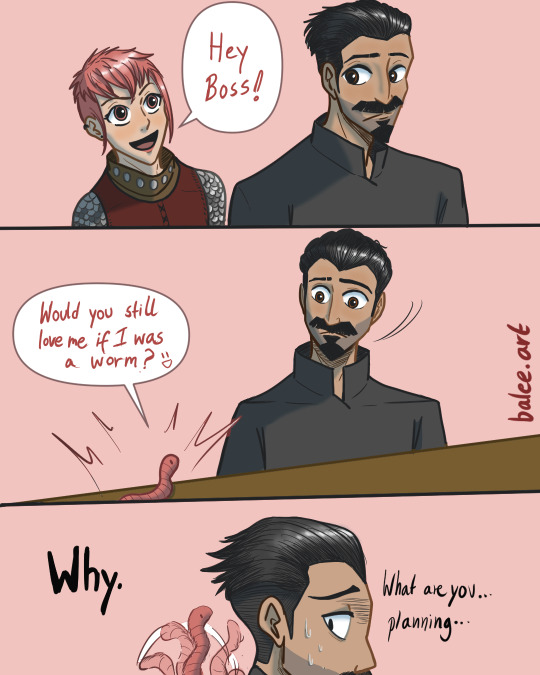
Based on that meme a.k.a. My only contribution to the Nimona fandom :P
Bonus:
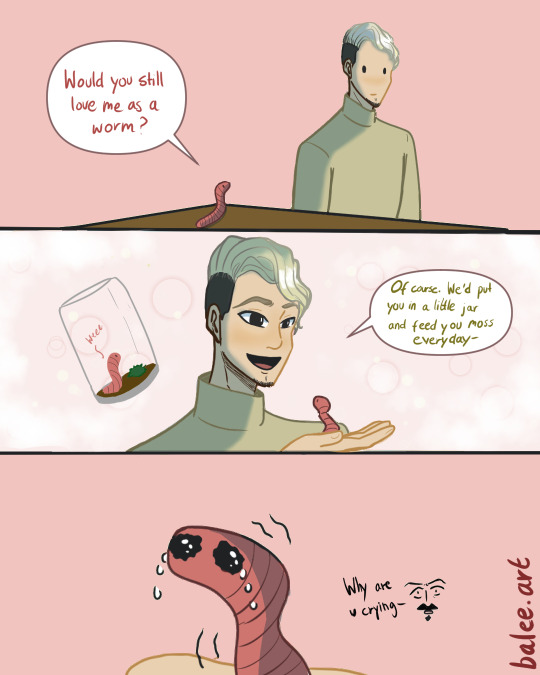
#this was the only thing i thought of the entire movie lol#art#artist#myart#digitalart#fanart#digitaldrawing#baleeart#nimona#nimona 2023#ballister blackheart#nimona film#nimona movie#ballister x ambrosius#nimona ballister#goldenheart
9K notes
·
View notes
Text

part 2
#its very important to me that everyone remember at all times that they are a family#nimona and ballister#nimona ambrosius#nimona spoilers#nimona#nimona 2023#nimona comic#nimona movie#nimona film#nimona netflix#ballister blackheart#nimona meme#nimoma#ambrosius x ballister#ambrosius goldenloin#ballister x ambrosius#balister blackheart#ballister#ballister boldheart#ambrosius#goldenheart
9K notes
·
View notes
Text
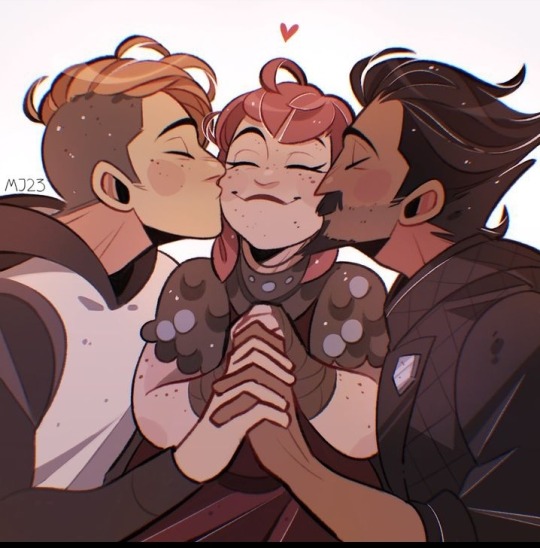
Artist: mangomangoj
7K notes
·
View notes
Text
the idea of gay dads post-nimona movie ending is so funny to me because imagine you're ambrosius and you and your husband adopted this little shapeshifter that just found your husband one day and your child looks at you and tells you that she had a baby gay relationship with your great-great-great-great-great-etc-grandmother about a thousand years ago like id be so distraught /hj
#nimona#nimona film#nimona netflix#ambrosius goldenloin#ballister boldheart#ballister x ambrosius#goldenheart#ambrosius being a direct descendent of gloreth was something i wasnt expecting#i love it though tbh#the parallels between bal + ambrosius and nimona + gloreth make me cry#bcuz nimona and ballister are so much more alike than either of them would think#and the whole ambrosius/gloreth always being in the light and ballister/nimona always being in the dark#UGHHHHH i love this movie so much
9K notes
·
View notes
Text
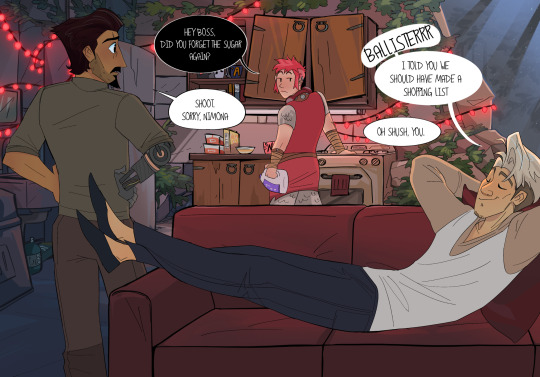

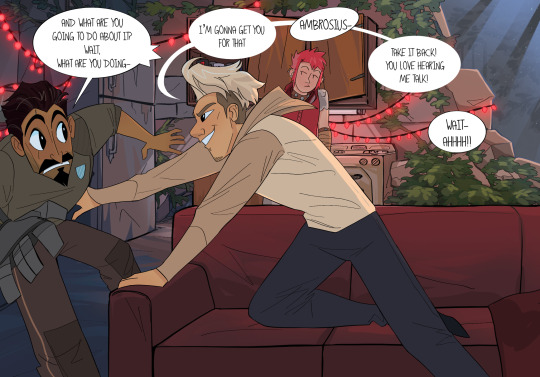
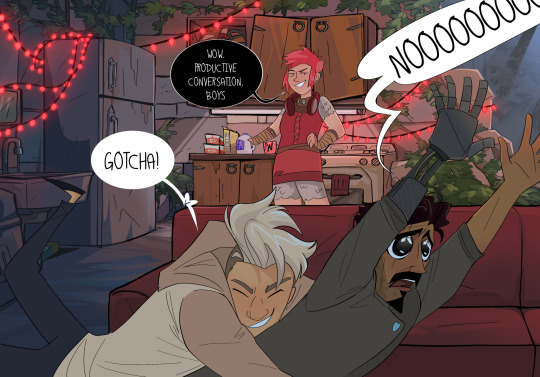
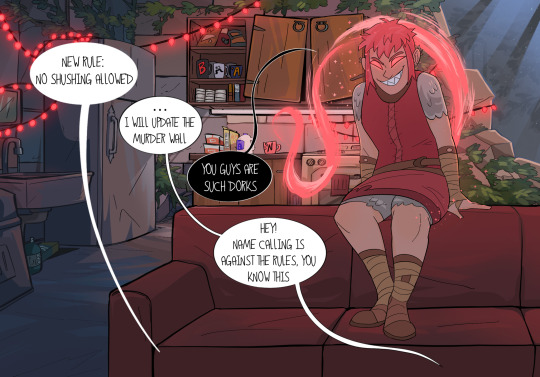
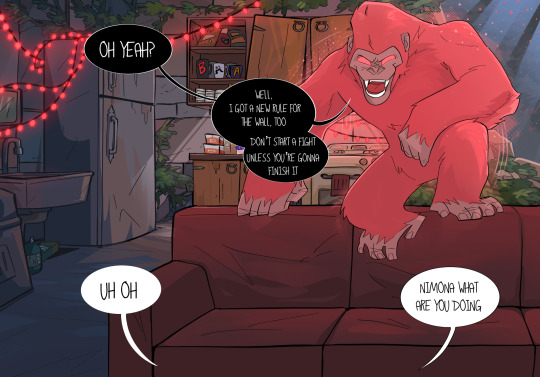
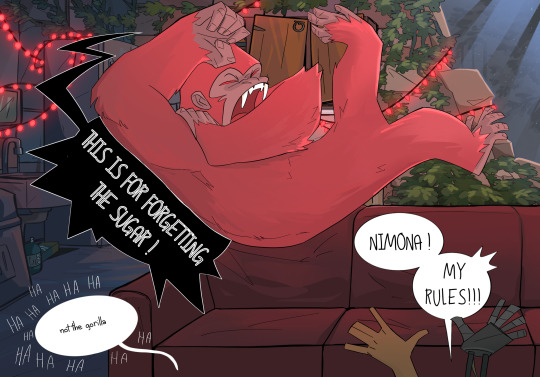
Had this goofy idea for a mini-comic of a day in the life of this weird little family. Hope you enjoy! 😈💥💕
#my art#fanart#nimona#ballister boldheart#ballister blackheart#nimona ballister#nimona fanart#ambrosius goldenloin#goldenheart#ballister x ambrosius#ambrosius x ballister#ballister fanart#nimona film#nimona netflix#nimona ambrosius#fan comic#mini comic#nimart
7K notes
·
View notes
Text
The "Nimona" movie teaser is up!! The movie released on Netflix June 30th, 2023!
The teaser is also up on Netflix's YouTube page!
And we have a new movie poster!

And official preview art on Netflix (which also has the teaser), featuring Ballister versus Ambrosius!
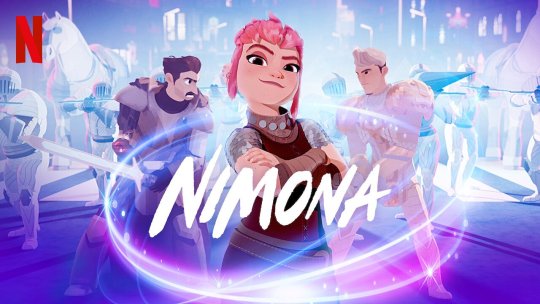
The movie is based on ND Stevenson's webcomic turned graphic novel, Nimona! The movie premiered at the Annecy International Animation Film Festival on June 14, 2023, and will show in select theaters on June 23, and will be available for general streaming on Netflix on June 30! The movie is animated by DNEG with material from the previously cancelled Blue Sky Studios production, produced by Annapurna Animation, and distributed by Netflix.
The graphic novel is available in physical and ebook form most places books are sold! And it's been translated into 16 languages! There's also a full cast English audiobook you can get most places audiobooks are sold!
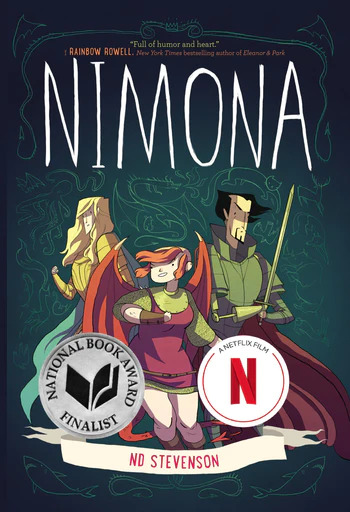
8K notes
·
View notes
Text
I like how the trauma of Ballister losing his arm was acknowledged, while the movie never implied that becoming disabled made him less.
Losing a limb is a traumatic experience which is given its due, but after Ballister becomes disabled, he's still a more than capable knight. It's implied that he made his prosthetic himself, which means this man built himself a working prosthetic with one hand, proving how skilled he is.
The confiscation of his prosthetic arm is treated as wrong - because that's not just a tool, it's his arm. He made it to be part of him. Ambrosius puts his hand on Ballister's prosthetic hand with all the tenderness that he would use if Ballister still had his flesh hand because disabled bodies can still be desirable, and that's still the hand of the man he loves, even though it's metal.
And when he reaches out to Nimona, it's with his prosthetic hand.
#this is not a nimona quote#nimona#ballister boldheart#ballister#ambrosius#nimona netflix#nimona film#nimona 2023
7K notes
·
View notes